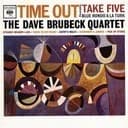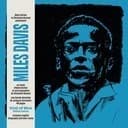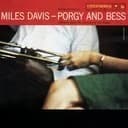Understanding the F Bebop Major Scale Structure
The F bebop major scale represents a crucial adaptation of the traditional F major scale(F-G-A-B♭-C-D-E-F) specifically engineered for jazz improvisation over major harmony. By inserting a chromatic passing tone C♯ between the perfect fifth (C) and major sixth (D), the scale expands from seven to eight notes, creating an octatonic structure that solves a fundamental rhythmic challenge in bebop playing. When jazz musicians play consecutive eighth notes over 4/4 time signatures using seven-note scales, chord tones often fall on weak beats, disrupting the natural flow and harmonic clarity of improvised lines. The F bebop major scale's eight-note configuration ensures that when starting from the root note F, all primary chord tones (F, A, C, E for Fmaj7) land precisely on strong beats, creating rhythmic stability and harmonic coherence characteristic of authentic bebop phrasing.
The interval formula for the F bebop major scale is 2-2-1-2-1-1-2-1 semitones, producing the intervallic structure: root (1), major second (2), major third (3), perfect fourth (4), perfect fifth (5), augmented fifth (♯5), major sixth (6), and major seventh (7). This formula differs from the traditional major scale (2-2-1-2-2-2-1) only in the insertion of a single chromatic interval between the fifth and sixth degrees. The resulting scale maintains the essential major quality of the F major scale while adding sophisticated chromatic color through the C♯ passing tone. Jazz theorists classify this as an octatonic scale—one containing eight distinct pitches per octave—placing it in the same structural category as diminished scales while serving a completely different harmonic function focused on major tonality rather than symmetric diminished harmony.
The Chromatic Passing Tone: C♯ and Voice Leading
The defining feature of the F bebop major scale is the chromatic passing tone C♯ (D♭), positioned strategically between C and D to create smooth half-step voice leading within the major framework. This chromatic note functions as a non-harmonic passing tone—it doesn't belong to the underlying Fmaj7 or F6 chord structure but instead creates melodic continuity and forward motion between chord tones. When ascending from C (the perfect fifth) to D (the major sixth), the C♯ provides a chromatic bridge that intensifies the melodic line with characteristic bebop chromaticism. In descending passages, moving from D down through C♯ to C creates elegant stepwise motion that connects the sixth to the fifth through chromatic approach, generating the sophisticated melodic contours that distinguish bebop improvisation from simpler diatonic playing.
The placement of C♯ between the fifth and sixth scale degrees creates particularly effective voice-leading possibilities when navigating through F major chord progressions. Jazz pianists exploit this chromatic passing tone to create enclosures, chromatic approaches, and digital patterns that surround chord tones with half-step motion from above and below. The C♯ also facilitates smooth melodic transitions when moving between F major harmony and related chords in the key, such as the ii-V-I progression Gm7-C7-Fmaj7, where the chromatic passing tone can connect scalar passages across changing harmonies. Advanced improvisers recognize that the C♯ in the F bebop major scale creates a momentary suggestion of harmonic tension—hinting at altered dominant or chromatic harmony—before resolving to the diatonic D, adding harmonic sophistication while maintaining clear major tonality.
Jazz Improvisation Applications Over F Major Chords
The F bebop major scale serves as the primary improvisational tool for jazz pianists soloing over Fmaj7 (F major seventh) and F6 (F major sixth) chords, particularly when F functions as the tonic I chord in F major progressions. Jazz standards frequently feature F major as a tonal center, especially in Bb instruments' keys where concert F major provides comfortable harmonic territory for horns. When improvising over Fmaj7 chords, the bebop major scale allows pianists to outline the chord structure (F-A-C-E) while incorporating the characteristic chromatic passing tone that creates authentic bebop vocabulary. The eight-note structure ensures rhythmic alignment: playing consecutive eighth notes from F places chord tones on strong beats (beats 1, 2, 3, 4) while passing tones including the chromatic C♯ fall on weak beats, creating natural emphasis on harmonic tones and maintaining clear tonal direction.
In practical jazz contexts, the F bebop major scale excels in standard progressions like Gm7-C7-Fmaj7, one of the most common ii-V-I resolutions in jazz repertoire. When soloing through this progression, jazz musicians typically apply G Dorian or G minor bebop over the Gm7 chord, C bebop dominant over the C7 chord, and F bebop major over the Fmaj7 resolution, creating seamless scalar voice leading through the entire progression. This approach appears throughout the jazz canon in standards like "Beautiful Love," "Confirmation," and numerous bossa nova compositions in F major. The bebop major scale works particularly effectively in medium and up-tempo swing contexts where flowing eighth-note lines predominate, providing a reliable framework for generating authentic bebop phrases, turns, and melodic sequences that characterize the classic bebop style pioneered by Charlie Parker, Bud Powell, and other jazz masters.
Harmonic Contexts and Chord Progressions
The F bebop major scale functions optimally in jazz progressions featuring Fmaj7 or F6 as tonic resolutions, appearing frequently in the key of F major where it serves as the primary scale for I chord improvisation. Beyond the fundamental ii-V-I progression (Gm7-C7-Fmaj7), the scale works effectively in turnarounds, vamps, and modal sections where F major harmony predominates for extended durations. In rhythm changes and contrafacts built on "I Got Rhythm" progressions transposed to F major, the bebop major scale handles the I chord sections while allowing improvisers to navigate bridge sections and harmonic variations using related scales. The scale also appears in jazz waltz progressions, bossa nova grooves, and Latin jazz contexts where major seventh chords receive extended harmonic treatment spanning multiple measures.
Jazz musicians often encounter F major harmony in standard progressions involving the subdominant relationship, where F major functions as the IV chord in C major or as borrowed major harmony in related keys. While the F bebop major scale primarily serves Fmaj7 functioning as tonic, advanced players occasionally apply it over F major chords in IV contexts, particularly in modal jazz or when F receives extended harmonic emphasis. The scale also relates to parallel minor harmony: when comparing F bebop major to F harmonic minor or F melodic minor, pianists develop deeper understanding of how chromatic alterations affect major versus minor tonality, expanding their harmonic vocabulary across different chord qualities and jazz contexts.
Piano Fingering and Practice Techniques
Effective piano practice of the F bebop major scale requires establishing consistent fingering patterns that accommodate the eight-note structure and facilitate smooth execution across multiple octaves. For the right hand ascending from F, use the fingering: 1(F)-2(G)-3(A)-1(B♭)-2(C)-3(C♯)-4(D)-5(E)-1(F), positioning the thumb under after the third finger on A and preparing for the octave F with the thumb. Left hand ascending employs: 5(F)-4(G)-3(A)-2(B♭)-1(C)-3(C♯)-2(D)-1(E)-3(F), ensuring smooth thumb crossings particularly through the chromatic C to C♯ passage. Practice hands separately initially at slow tempos (60-80 BPM), focusing on even articulation and accurate execution of the chromatic passing tone, then gradually increase speed while maintaining clarity and rhythmic precision.
Rhythmic practice forms the foundation of bebop scale mastery, developing the crucial ability to emphasize chord tones on strong beats while playing passing tones lighter on weak beats. Set a metronome to moderate tempo and practice the F bebop major scale in strict eighth notes, deliberately accenting chord tones (F, A, C, E falling on beats 1, 2, 3, 4) while playing passing tones (G, B♭, D) and the chromatic C♯ lighter on upbeats. This downbeat emphasis drill trains both physical technique and aural perception, developing the rhythmic awareness essential for authentic bebop phrasing. Progress to practicing the scale in different rhythmic groupings including triplets, sixteenth-note runs, and syncopated patterns, applying it to ii-V-I backing tracks in F major, and transcribing bebop solos that demonstrate musical application of the bebop major scale in actual jazz contexts by masters like Bud Powell, Barry Harris, and contemporary jazz pianists.
Related Scales and Theoretical Connections
Understanding the F bebop major scale's relationship to other scales deepens theoretical knowledge and expands improvisational options. The scale shares its root and basic major framework with F major, differing only in the addition of the C♯ chromatic passing tone—this close relationship means that F major scale knowledge directly transfers to bebop major application with minimal adjustment. The F bebop major scale also parallels F bebop dominant, which adds a chromatic passing tone to F Mixolydian (the dominant scale) rather than F major, creating paired bebop scales appropriate for different chord qualities: bebop major for major seventh chords, bebop dominant for dominant seventh chords.
The F bebop major scale also connects to modal variations built on F major tonality, including F Lydian (which brightens the fourth degree to B natural rather than B♭) and F Ionian (identical to F major). Advanced jazz students explore how the bebop major scale relates to symmetric scales like the diminished scale, melodic minor modes including Lydian dominant, and altered scales, building comprehensive scalar vocabulary that supports sophisticated harmonic navigation. Practicing the F bebop major scale alongside these related scales, comparing their intervallic structures, and applying them to common chord progressions develops the theoretical fluency and practical facility necessary for advanced jazz improvisation across all styles from traditional bebop through contemporary jazz and fusion.





